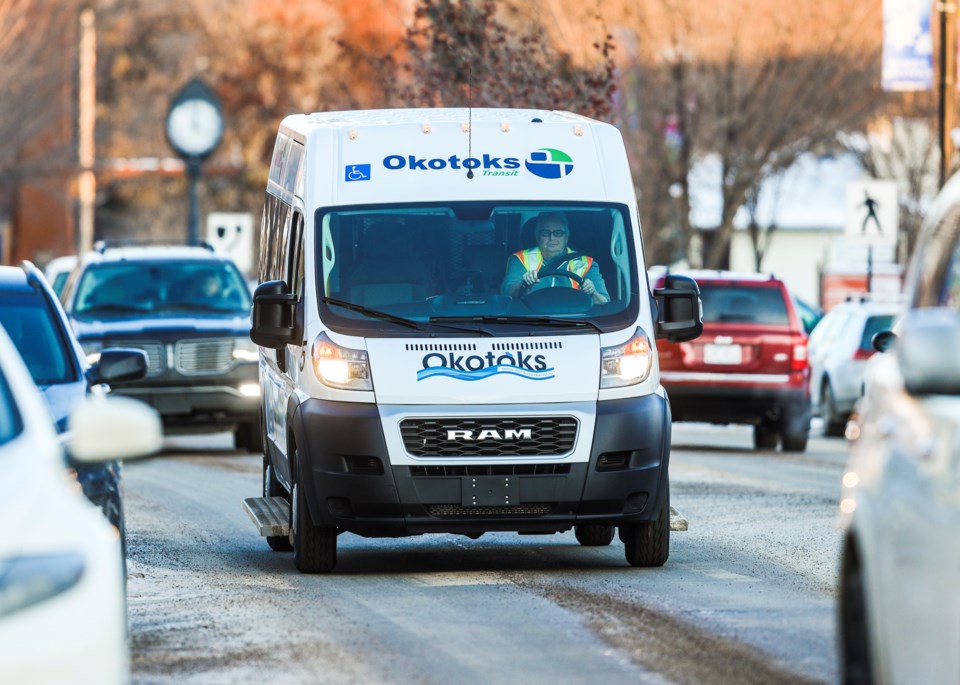Significant changes are coming to Okotoks Transit in the new year.
Town council approved the 2022 budget during the Dec. 13 meeting, and within that budget comes a $196,000 designation to expand transit service.
Beginning Jan. 1, patrons will be able to catch a ride via transit from 6 a.m. to 11:30 p.m. on Sundays and statutory holidays, excluding Christmas Day.
Regular weekday service is also being extended by a half hour, beginning at 5:30 a.m. Service ends at 11:30 p.m.
Additional vehicles are also being added to the fleet to increase the level of service during peak times.
“Our budget allows us to increase vehicle supply during the busier times of the weekdays,” said Town of Okotoks transit specialist David Gardner. “For example, between 2-4 p.m. in the afternoon, there’s a lot of demand that we aren’t able to meet right now and I’m hoping we’ll be able to meet some of that demand in the new year.”
Okotoks Transit works on an on-demand style framework — riders can book a ride via the Okotoks Transit On Demand app, online or by calling 587-534-0510.
Passengers are picked up at their desired location and dropped directly at their destination, eliminating the need to walk to pre-determined bus stops. It works similar to a ride-share service, meaning that rides can only occur when vehicles are able to complete them.
Gardner said that, on average, between September and November, there were about 400 people who requested a ride that couldn’t get one.
“It equates to roughly 10 per cent of passengers that we booked, were not able to get a ride,” he said, adding that this is a result of high demand for the service.
“The algorithm will allocate rides as much as it can within the trip windows that are booked for each passenger and at a certain point it becomes a saturated service."
Transit in town is relatively new, as the program was launched in December 2019.
Given the onset of the pandemic a short time later, Gardner explained that a standard level of ridership is hard to gauge.
A feasibility study completed prior to the launch of the service predicted 18,000 rides in the first year, he said. Ridership in 2020 greatly exceeded that estimate with 27,401 rides, despite the pandemic, said Gardner.
This year is set to significantly surpass that number.
“We’re on track to do about 40,000 in 2021,” he said. “And my budget is based on about 50,000 passengers in 2022.”
Gardner sits on the Canadian Urban Transit Association (CUTA) board and said that most members of the organization are only seeing about 50 per cent of their pre-pandemic ridership.
He believes the use of transit in Okotoks is so large for a few reasons — the realization that it can be used by any member of the public for a variety of reasons, its reasonable pricing and its high level of service.
“Our transit system is one of very few that are offering a curb-to-curb service which is a high level of service,” Gardner said. “Many of the other on-demand systems out there are doing the virtual stop system where users need to walk, perhaps 300 metres to the nearest stop. For some residents, that’s not a totally fine situation, especially when it gets icy in the winter.”




